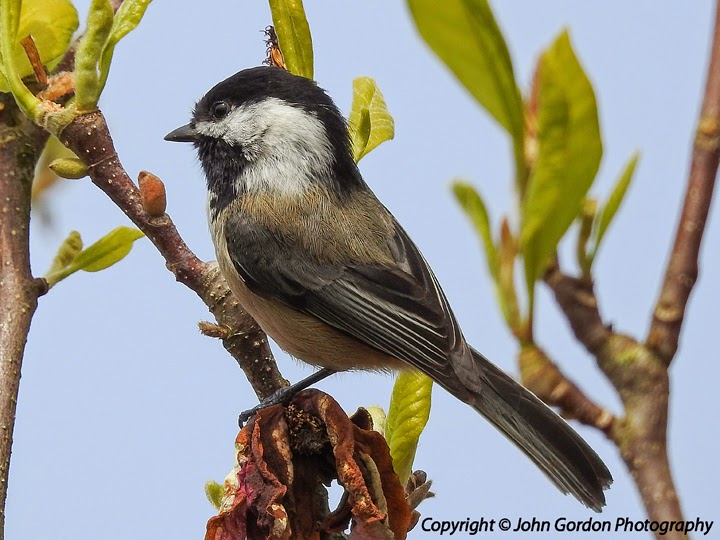April 26 2015 Queen Elizabeth Park, Vancouver BC Canada. Sunny and warm 16c
I had read about 'Fallouts' but had never actually witnessed the phenomenon. That changed Monday, what an unforgettable sight. Two years ago I watched birds arriving on the tip of Point Pelee but that was quite different to the scene at Queen Elizabeth Park. The highest point in Vancouver City, the former quarry and now a park resplendent in not only flowers, shrubs and ornamental trees but birdlife too. The park is an oasis of calm. I often see people just sitting, meditating or and doing nothing, an increasingly rare sight these days.
 |
| Bushtit (Psaltriparus minimus) |
The Bushtits were extra busy collecting insects and caterpillars especially as the new influx of warblers seemed to transform the park in a veritable hive of activity.
The Hutton's was lifer for me. I had been searching for one on my last few visits to the park. I thought I could hear a vireo singing so I played a song for 30 secs and within moments this curious Hutton's came out to see what the bother was all about.
 |
| (fig1) Hutton's Vireo (Vireo atricapillus) |
The prolonged playing of calls at this time of year should be done with great caution so as not to bring attention to a bird's nest or its whereabouts. Crows and Sharp-shinned Hawks are always on the prowl for an easy meal.
 |
| (fig 2) Hutton's Vireo |
In photo composition and in the West we read from left to right so we are programmed in a way to look at images that way. In the above picture (fig 2) the bird is looking from right to left. The first Hutton's (fig1) the birds is looking from left to right.
Which of the two Hutton Vireos images do you think is easier on your eye. Please let me know.
 |
| Orange-crowned Warbler (Vermivora celata) |
Such an accommodating bird, the Orange Crowned Warbler seems more comfortable with human activity than many of the other warblers except perhaps the Yellow-rumped. Orange-crowned Warblers nest in the Lower Mainland and beyond and are one of the true harbingers of springtime.
 |
| Townsend's Warbler |
Use selective focus (above) when you can't get a clear view of the subject. This was common problem during the QE warbler fallout as many of the birds fed under the canopy of the trees. The technique is not always successful but worth the effort. When shooting through the leaves use a wide open aperture like F4 or F5.6 which still enables a shot to be taken like the one above. One advantage is that it often shows more of the environment as photographers often zoom in too close loosing all sense of place. I'm an expert at that!
Later and this is where the thinking cap comes in, a photograph hopefully contains some behavioural traits, what a radical concept that is! Perhaps a bird eating, diving, soaring, or mating. Sometimes an incredible image might show 90 environment and 10 percent bird. Of course this takes an even amount skill, time, patience and quite a bit of luck.
 |
Townsend's Warbler (Dendroica townsendi)
|
Note the ragged leaves of the cherry tree where a green caterpillar hatch made a perfect hunting ground for the flock of warblers travelling through the park.
 |
| Female Yellow-Rumped Warbler (Audubon) |
The Yellow-rumped Warbler is one of the most common warblers seen in the Lower Mainland, some overwinter here. They have the ability to change their diet from insects to seeds as the seasons change.
 |
| Yellow-Dumped Warbler (Myrtle) |
Other birds noted were the Black-throated Gray Warbler, Townsend's Solitaire, Wilson's Warbler, Nashville Warbler and Warbling Vireo, all were busily feeding after their long journey.
 |
| Wilson's Warbler (Wilsonia pusilla) |
"It's never too late to start birding"
John Gordon
Langley/Cloverdale
BC Canada
























































